
Fundamentals
The conversation surrounding Textured Scalp Wellness commences at the very foundation of textured hair itself ❉ the scalp. It is here, within this living terrain, that the intricate relationship between ancestral practice, biological reality, and cultural identity takes root. To speak of Textured Scalp Wellness is to speak of the essential vitality of the ecosystem that cradles each individual strand, particularly those of coiled, kinky, and wavy hair patterns, which bear the distinct markers of heritage. This understanding acknowledges that the scalp, often overlooked in broader beauty discourse, is a primary determinant of hair’s condition, its ability to flourish, and its long-term integrity, especially for hair types that are inherently predisposed to dryness or fragility due to their unique structural formation.
At its simplest, Textured Scalp Wellness refers to a state of optimal health for the skin of the head, specifically tailored to the unique physiological and anatomical considerations of textured hair. This encompasses a proper balance of the scalp’s microbiome, adequate hydration of the epidermal layers, efficient sebum regulation, and freedom from irritation, inflammation, or excessive build-up. The meaning of this term extends beyond mere cleanliness; it represents a proactive approach to care that respects the delicate nature of the hair follicle and its surrounding environment, recognizing that a vibrant, healthy scalp is the precursor to vibrant, healthy hair. This initial grasp of the concept opens a window into a world where ancestral knowledge and modern biological insight intertwine to cultivate deep, abiding care for the hair.
Textured Scalp Wellness begins with acknowledging the scalp as a living ecosystem, crucial for the vitality and resilience of coiled, kinky, and wavy hair, rooted deeply in heritage.
The scalp, a dynamic landscape of skin, sebaceous glands, and hair follicles, presents a unique set of needs when it nurtures textured strands. Unlike straight hair, which allows natural oils to travel down the hair shaft with relative ease, the twists and turns of textured hair can impede this journey. This inherent characteristic often results in a drier scalp, leaving it more vulnerable to flakiness, itchiness, and a compromised barrier function.
Understanding this fundamental biological reality is the initial step toward cultivating meaningful Textured Scalp Wellness. The very structure of the follicle, often curved or elliptical in textured hair, shapes the emergent strand, giving it its characteristic coils or waves, and it is this architecture that dictates many of the distinctive requirements for its proper care.
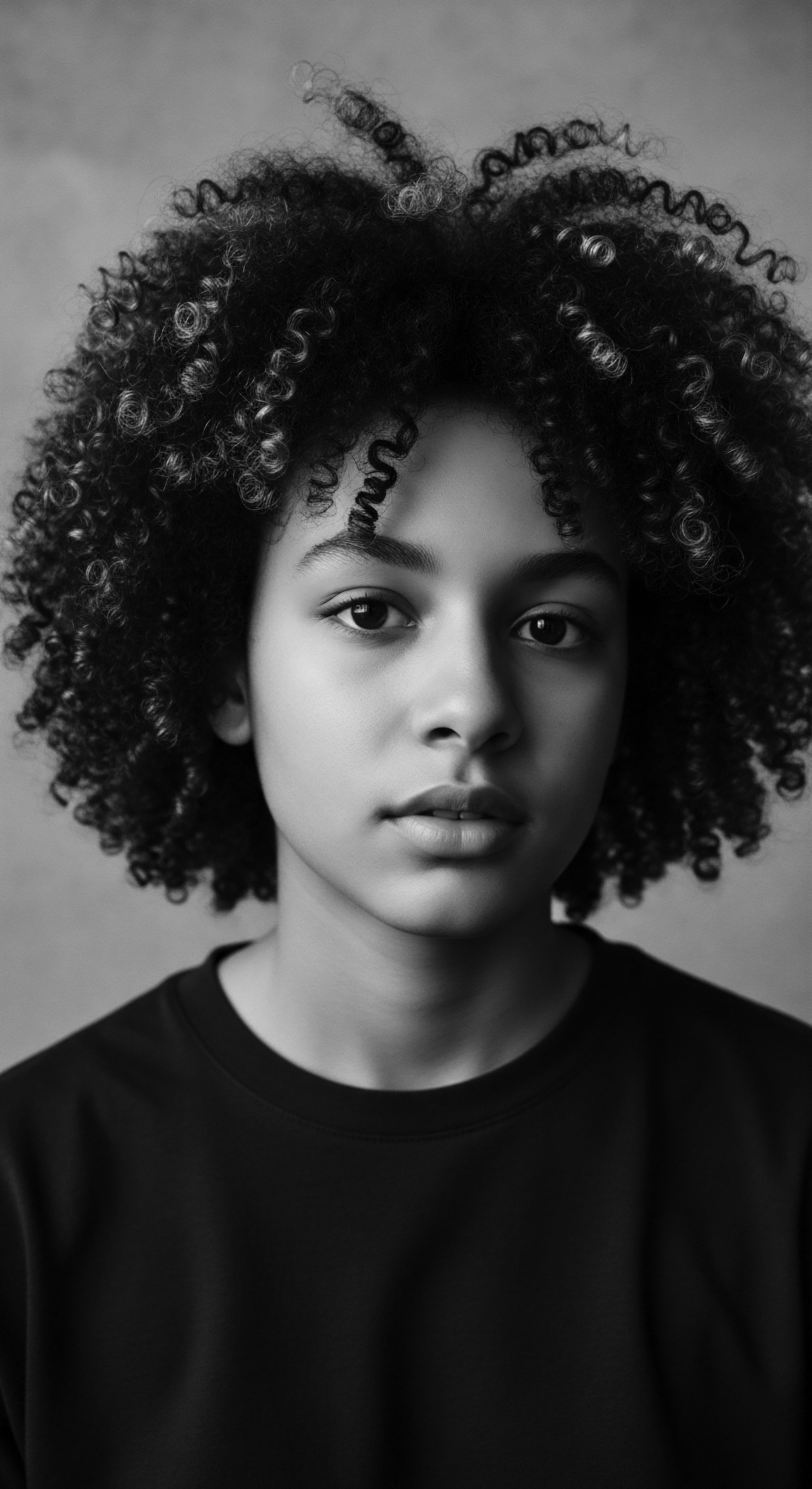
The Skin Beneath ❉ A Biological Primer
Beneath the visible strands lies a complex biological system. The skin of the scalp, thicker than skin on other parts of the body, consists of several layers, each with its own vital role. The outermost layer, the Epidermis, acts as a protective shield against environmental aggressors and moisture loss. Beneath this lies the Dermis, where hair follicles are anchored, alongside sebaceous glands that produce Sebum, the scalp’s natural moisturizing oil.
A healthy scalp barrier function is paramount, preventing transepidermal water loss and guarding against the penetration of irritants. For textured hair, where natural oil distribution can be uneven, maintaining this barrier requires specific attention, often through intentional hydration and gentle cleansing rituals that honor its inherent disposition.
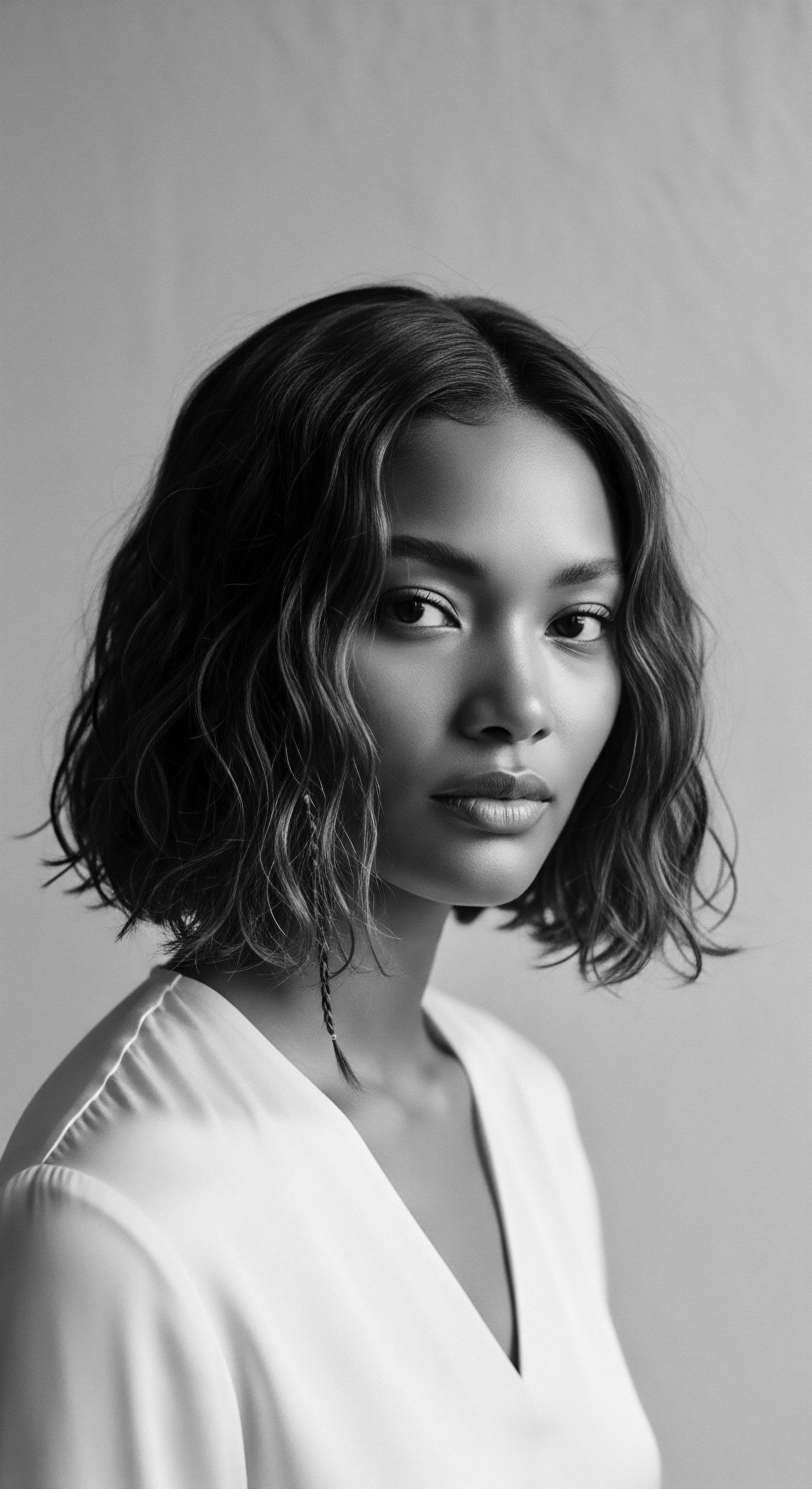
Follicle Form and Function
Each hair strand originates from a Hair Follicle, a tiny organ nestled within the dermis. The shape of this follicle largely determines the hair’s curl pattern. In textured hair, follicles are typically elliptical or flat, causing the hair to grow in a curved or helical pattern.
This unique morphology affects how hair emerges from the scalp and how it interacts with the scalp’s surface. The curvature means that the hair shaft can lift away from the scalp at certain points, creating pockets that can trap product residue or environmental particles, necessitating methods of cleansing and stimulation that address these unique angles.
- Hydration Protocols ❉ Traditional practices often involved the regular application of rich oils and butters to the scalp, recognizing its propensity for dryness.
- Gentle Cleansing ❉ Ancestral wisdom frequently favored mild, natural cleansers that did not strip the scalp of its vital protective oils.
- Stimulation Techniques ❉ Scalp massage, a common practice across various cultures, enhanced circulation and supported nutrient delivery to the follicles.

Echoes from the Source ❉ Ancestral Foundations
The concept of nurturing the scalp is not a modern invention; it echoes through generations of ancestral wisdom, particularly within Black and mixed-race communities where hair has always been a profound marker of identity, status, and spiritual connection. Long before the advent of industrial beauty products, these communities cultivated sophisticated systems of hair and scalp care, relying on the land’s bounty and collective knowledge. These practices, passed down through oral traditions and communal rituals, form the very bedrock of what we now articulate as Textured Scalp Wellness. They understood, intuitively, that a healthy scalp was the source of powerful, resilient hair.
The early understanding of scalp wellness was deeply intertwined with the rhythms of nature and the availability of indigenous flora. From the shea trees of West Africa, yielding their nourishing butter, to the aloe plants revered for their soothing properties across many sun-drenched lands, natural ingredients were the pharmacopoeia of the scalp. The preparations were often elaborate, involving long hours of gathering, concocting, and applying, often as a shared community activity. This communal aspect imbued the practice with a social and spiritual significance, transforming individual care into a collective ritual of beautification and well-being.
| Traditional Ingredient/Practice Shea Butter (West Africa) |
| Ancestral Understanding/Benefit Deep moisturization, protection from sun and wind. |
| Modern Corroboration (General Principle) Rich in fatty acids (oleic, stearic), vitamins A & E, forms a protective barrier. |
| Traditional Ingredient/Practice Castor Oil (Africa/Caribbean) |
| Ancestral Understanding/Benefit Hair growth stimulation, scalp conditioning, anti-inflammatory. |
| Modern Corroboration (General Principle) Contains ricinoleic acid, promotes circulation, antimicrobial properties. |
| Traditional Ingredient/Practice Herbal Rinses (Various) |
| Ancestral Understanding/Benefit Cleansing, soothing irritation, promoting shine. |
| Modern Corroboration (General Principle) Antioxidant, anti-inflammatory, astringent compounds (e.g. saponins). |
| Traditional Ingredient/Practice These ancestral practices laid the groundwork for contemporary Textured Scalp Wellness, showcasing enduring wisdom. |

Intermediate
Moving beyond the foundational tenets, an intermediate understanding of Textured Scalp Wellness delves into the dynamic interplay between inherent characteristics of textured hair and the practices that either support or compromise its health. This level of understanding acknowledges that the scalp is not merely a passive substrate for hair growth; it is an active participant in hair health, subject to both internal systemic factors and external environmental influences. For textured hair, this conversation gains particular urgency due to its unique structural demands and the historical context of its care. The continuous thread of ancestral knowledge, often refined through trial and generational experience, provides a robust framework for navigating these complexities.
The significance of Textured Scalp Wellness extends beyond individual comfort; it touches upon the very resilience and vitality of the hair fiber itself. A compromised scalp environment can lead to issues such as dryness, irritation, and even conditions that impede healthy growth. Understanding the mechanics of sebum distribution on textured hair is paramount.
Because the coils and kinks of hair strands can prevent natural oils from easily migrating down the shaft, the scalp itself can become dehydrated, leaving it prone to flaking or tightness. This necessitates a proactive approach to moisture replenishment directly at the source, moving beyond just oiling the hair strands to truly nurturing the skin of the head.

The Microbiome’s Silent Influence
Within the intricate ecology of the scalp resides a diverse community of microorganisms—bacteria, fungi, and viruses—collectively known as the scalp Microbiome. This microscopic world plays a pivotal role in maintaining scalp health. A balanced microbiome supports the skin’s barrier function, helps regulate oil production, and acts as a defense against opportunistic pathogens.
Disruptions to this delicate balance, often caused by harsh chemicals, over-cleansing, or excessive product build-up, can lead to inflammation, itchiness, and conditions such as seborrheic dermatitis. For textured hair, the tendency to use heavier products or engage in less frequent washing due to concerns about stripping moisture requires careful consideration of how these practices affect the scalp’s microbial equilibrium.
Maintaining the scalp’s delicate microbiome is crucial, particularly for textured hair, where unique care practices can influence its balance.
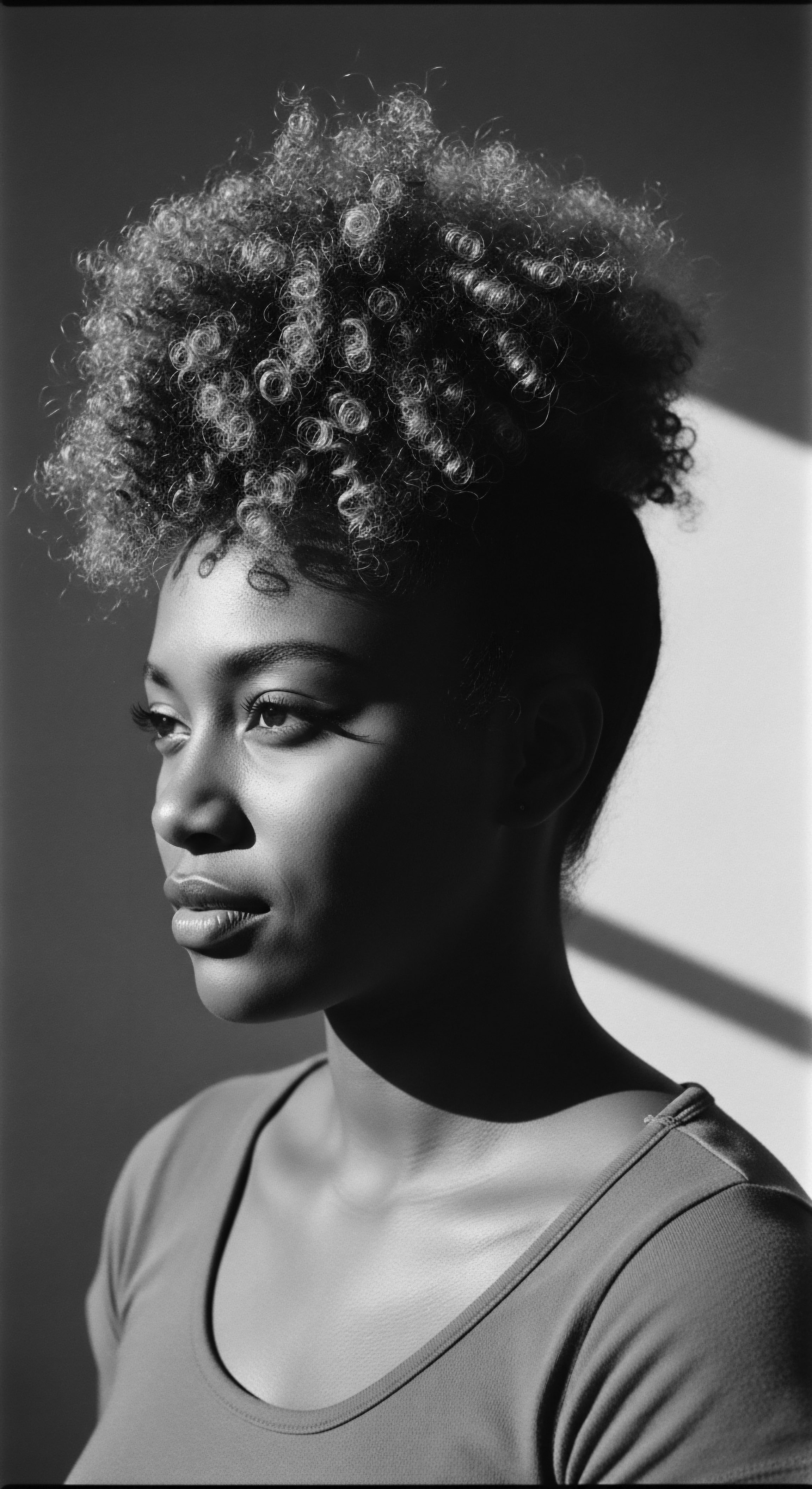
Traditional Fermentation and the Microbiome
Ancestral practices often employed fermented ingredients or those rich in probiotics, even if their understanding of microbiology was nascent. For instance, the use of fermented rice water in parts of Asia, or certain sour plant decoctions in African traditions, implicitly supported a healthy scalp environment. While not directly targeted at the “microbiome” in the scientific sense of today, these methods, often acidic or containing beneficial microorganisms, contributed to a balanced pH and potentially supported the skin’s natural defenses. The recognition of these traditional applications provides a fascinating bridge between ancient wisdom and contemporary scientific discovery, illustrating how historical methods often possessed an intuitive efficacy.
Consider the deep historical ties between hair care and the natural world, particularly the use of clays. In many traditional African societies, specific types of clay, often rich in minerals, were employed for cleansing the hair and scalp. These clays, when mixed with water, possessed absorbent properties, capable of drawing out impurities and excess oil from the scalp without stripping its natural moisture.
The practice was not just about superficial cleanliness; it was a ritual of purification and replenishment, connecting the individual to the earth. Such traditions highlight an innate understanding of the scalp’s needs, centuries before modern dermatology articulated concepts like pH balance or mineral composition.

The Tender Thread ❉ Rituals of Care and Community
The story of Textured Scalp Wellness in textured hair communities is not solely a biological one; it is a profound cultural narrative. Hair care rituals, particularly those involving the scalp, have historically served as communal acts, moments of bonding, and transmissions of generational wisdom. These practices were often performed by mothers, aunties, and elders, reinforcing family ties and cultural continuity. The sensation of fingers gently massaging the scalp, the scent of specific oils, and the rhythm of communal braiding sessions all contributed to a holistic sense of well-being that transcended mere physical care.
For generations, the process of tending to textured hair and scalp involved a conscious, deliberate approach. This was not a quick routine; it was a sacred pause, a time for introspection and connection. The meticulous sectioning of hair, the careful detangling, and the application of nourishing preparations to the scalp were acts of love and dedication.
This care often extended beyond the individual, becoming a shared experience within families and communities, where knowledge was exchanged, stories were told, and a collective understanding of hair’s deeper meaning was reinforced. The communal hair session, a hallmark of many Black households, exemplifies this tender thread, where scalp wellness became a shared responsibility and a source of collective strength.
- Communal Grooming ❉ Shared hair styling sessions among family members or community circles reinforced social bonds and allowed for the passing down of knowledge.
- Generational Transfer ❉ Elders instructed younger generations on proper cleansing, moisturizing, and protective styling, emphasizing scalp health as a prerequisite.
- Holistic Connection ❉ Hair and scalp care were often linked to overall physical and spiritual well-being, reflecting a worldview where mind, body, and spirit were inseparable.

Academic
The academic elucidation of Textured Scalp Wellness necessitates a multidisciplinary lens, synthesizing dermatological science, ethnobotanical studies, historical anthropology, and socio-cultural critique to fully grasp its significance. At its core, the term designates a state of optimal physiological functioning and psychological well-being of the scalp, specifically contextualized within the unique follicular morphology and socio-historical experiences associated with textured hair types, particularly those prevalent in Black and mixed-race diasporas. This understanding moves beyond a simplistic binary of “healthy” versus “unhealthy,” instead asserting a continuum of care that respects genetic predispositions, environmental stressors, and the profound cultural load carried by textured hair. It recognizes that the scalp of individuals with coiled or kinky hair requires a differential approach to moisture retention, sebum distribution, and product efficacy due to the elliptical cross-section of the hair shaft and its natural inclination towards dryness.
To truly appreciate Textured Scalp Wellness at an academic level, one must consider the historical resilience embedded within care practices. The scalp, as the origin point for hair, often bears the brunt of environmental challenges and styling choices. For Black hair, which has historically been a site of both immense beauty and oppressive control, scalp health became a silent language of resistance and self-preservation.
This meaning extends to its profound psychological connotations ❉ a healthy scalp fosters comfort, reduces irritation, and allows for greater freedom in styling and expression, directly contributing to an individual’s sense of confidence and belonging. It is a critical nexus where individual biology intersects with collective cultural memory, demanding a scholarly examination that transcends superficial observations.
Textured Scalp Wellness is a complex interplay of biology, ancestral practices, and cultural resistance, necessitating a multidisciplinary scholarly examination.
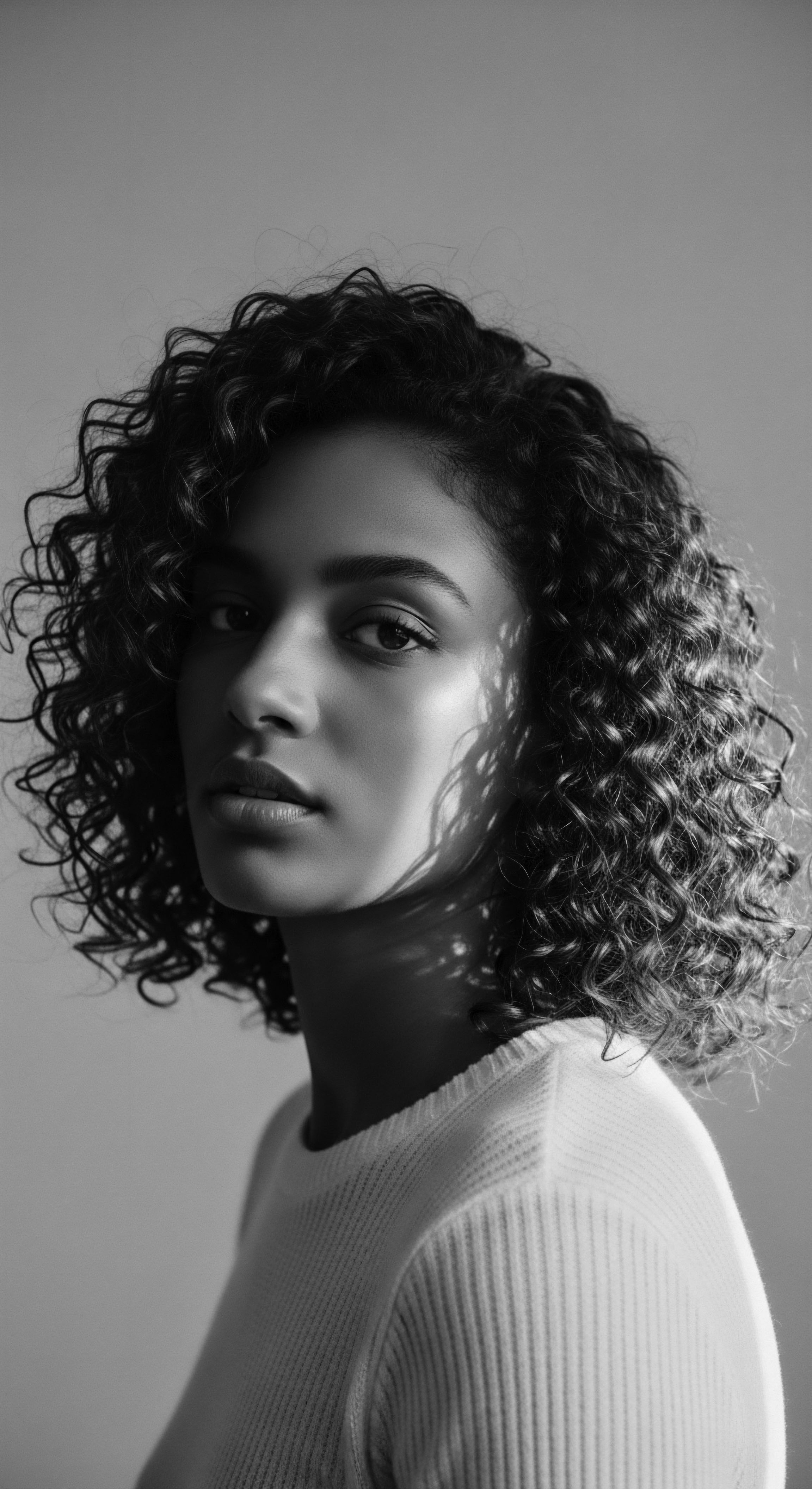
The Unbound Helix ❉ Voicing Identity and Shaping Futures
The very strands of textured hair carry a legacy, and the scalp from which they spring holds the memory of generations of care, neglect, and rediscovery. The concept of Textured Scalp Wellness, when viewed through an academic prism, becomes a testament to the enduring human spirit and the reclamation of self. It is not merely about addressing physiological conditions; it is about affirming identity, challenging historical biases, and shaping a future where textured hair is celebrated in its authentic glory, starting from the roots. This vision extends beyond individual practices, encompassing broader conversations about product development, equitable access to culturally competent dermatological care, and the dismantling of beauty standards that have historically marginalized textured hair.
The history of Black hair in the Western world, particularly in post-colonial contexts, reveals a continuous struggle against societal norms that denigrated its natural state. The imposition of straight hair ideals often led to damaging practices, directly impacting scalp health through chemical relaxers, excessive heat, and tight styles designed to conform. Yet, within these challenging narratives, ancestral methods of scalp care persisted, often in secret, passed down from mother to daughter as acts of subtle defiance and self-preservation. These hidden histories highlight how Textured Scalp Wellness was, at times, a form of quiet revolution, a way to maintain physical and spiritual integrity in the face of external pressures.

A Case Study in Resilience ❉ The Igbo Tradition of Igba Mgbam and Scalp Health
To truly understand the depth of Textured Scalp Wellness, we must look to specific ancestral practices that reveal sophisticated, albeit non-scientific, understandings of scalp physiology. Consider the Igbo people of Nigeria, whose rich hair traditions often featured intricate braiding techniques, frequently accompanied by specific scalp care rituals. One notable practice, Igba Mgbam, involved the application of traditional concoctions, often made from natural oils, herbs, and sometimes even a specific type of ash, directly to the scalp before or during the braiding process. The purpose of this was not merely aesthetic; it served to lubricate the scalp, reduce friction during styling, and provide a protective barrier.
A study by Nwokolo (2018) on traditional Igbo hair care practices sheds light on the inherent wisdom in these applications. While the study primarily documented the cultural significance of various hairstyles, it implicitly underscored the attention paid to the scalp. Traditional Igbo formulations for hair and scalp were often derived from plants such as Pterocarpus mildbraedii (popularly known as ‘oha leaf’), Gnetum africanum (‘ukazi’), and local oils like palm kernel oil. These ingredients, applied in rituals like Igba Mgbam, provided emollients, anti-inflammatory compounds, and antimicrobial agents that would have supported scalp barrier function and reduced irritation from tension styling.
This practice demonstrates an intuitive understanding of the biophysical needs of the scalp even without the contemporary lexicon of dermatology. The systematic application of these preparations speaks to a pre-scientific grasp of preventative care, mitigating potential damage from tight braids and ensuring the scalp remained supple and less prone to breakage at the root. The communal nature of these grooming sessions also fostered a sense of shared responsibility for well-being, emphasizing scalp health as a collective value.
The meaning of this specific example resonates powerfully with modern Textured Scalp Wellness. It illustrates that long before clinical trials, ancestral communities had empirically developed effective strategies for scalp maintenance, often through generations of observation and refinement. The practice of Igba Mgbam, and similar rituals across diverse African communities, served as an early form of preventative dermatological care, recognizing that a well-nourished, protected scalp was fundamental to healthy, resilient hair, particularly given the tension and manipulation inherent in many traditional textured hairstyles.
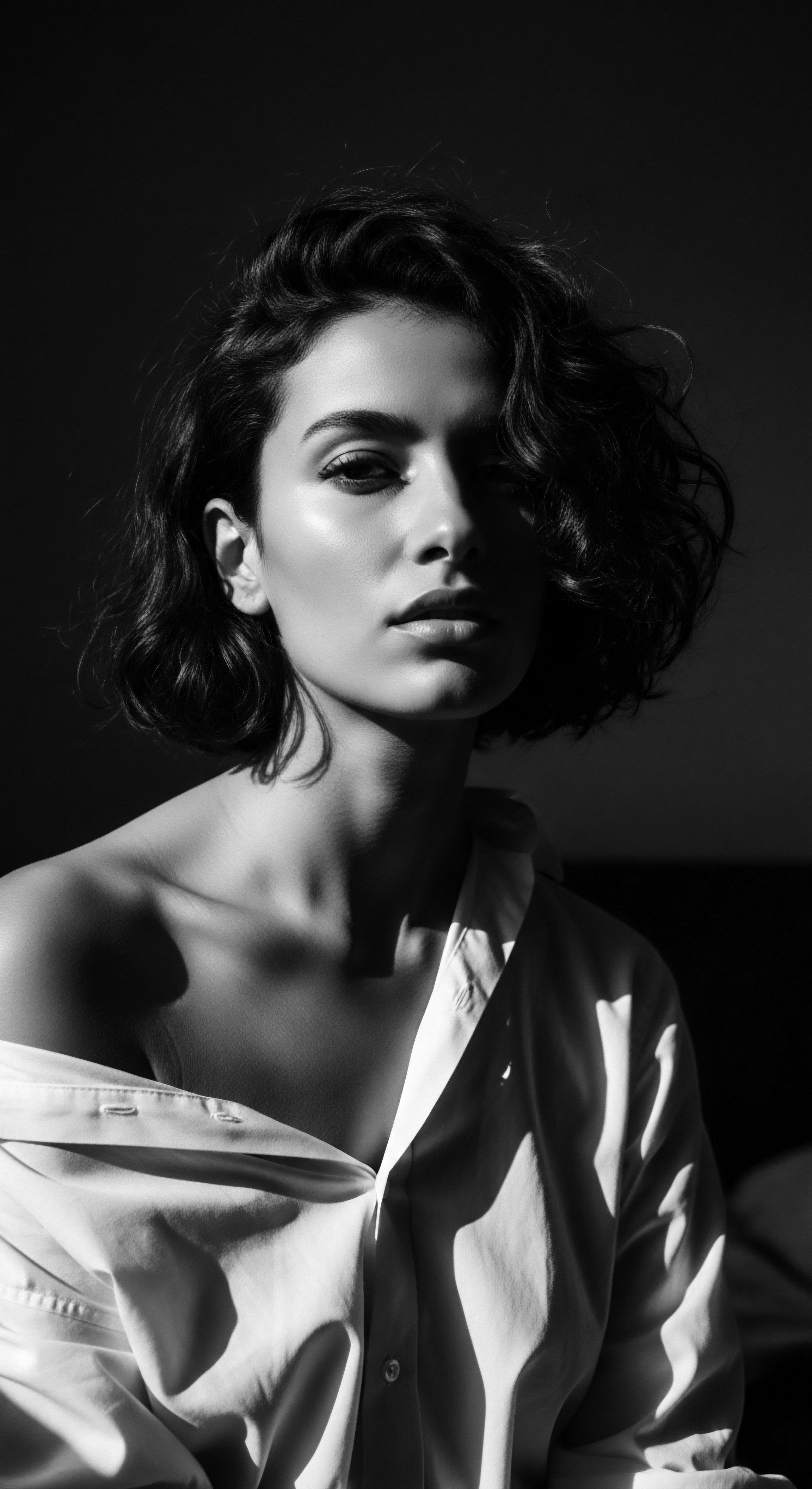
Beyond Superficiality ❉ The Psychosocial Dimensions
Academic inquiry into Textured Scalp Wellness also grapples with its psychosocial dimensions. The scalp is a highly innervated area, rich in nerve endings, making it a sensitive zone for sensory input. Chronic irritation, itchiness, or pain stemming from poor scalp health can significantly impact an individual’s quality of life, leading to discomfort, self-consciousness, and even anxiety or depression. Conversely, the act of nurturing the scalp, whether through gentle cleansing or therapeutic massage, can provide immense comfort and a sense of calm.
This connection between physical sensation and emotional well-being is particularly poignant for those whose hair journeys have been marked by societal pressure or misunderstanding. The act of self-care directed at the scalp becomes a powerful tool for self-affirmation and psychological grounding.
Furthermore, the perception of scalp health can influence styling choices and, by extension, social interaction. When the scalp is healthy and comfortable, individuals with textured hair are more likely to wear their natural textures openly, free from the constraints of concealing an irritated or unhealthy scalp. This freedom of expression contributes to a deeper sense of self-acceptance and cultural pride, reinforcing the connection between individual wellness and collective identity. The academic examination thus unveils Textured Scalp Wellness not as a mere physiological state, but as a complex construct that deeply impacts one’s corporeal experience, cultural connection, and psychological landscape.
- Microbiome Dysbiosis ❉ Academic research highlights that imbalances in the scalp microbiome, potentially exacerbated by specific textured hair care practices, contribute to common scalp conditions.
- Inflammatory Responses ❉ Studies link certain chemical treatments and excessive tension styles, historically applied to textured hair, to chronic scalp inflammation and follicular damage.
- Psychodermatology ❉ The bidirectional relationship between scalp health and mental well-being is increasingly recognized, underscoring the holistic impact of Textured Scalp Wellness.
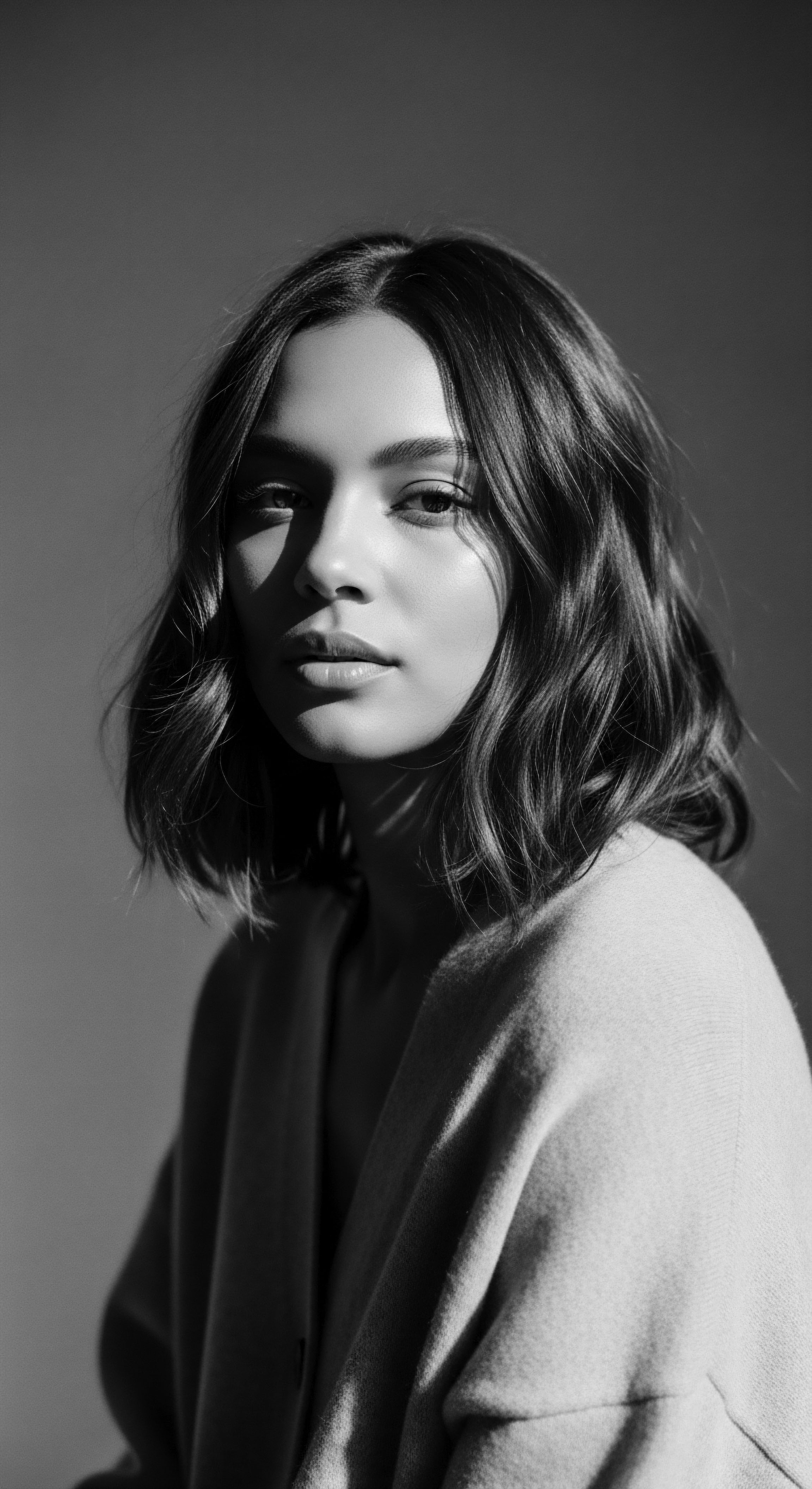
Reflection on the Heritage of Textured Scalp Wellness
The journey through Textured Scalp Wellness, from its elemental biological truths to its expansive academic interpretations, ultimately leads us back to its deepest wellspring ❉ heritage. It is here that the concept truly finds its soul, recognizing that the care of textured hair, and the scalp that anchors it, is not a recent discovery, but a continuous conversation across generations. Each touch, each strand detangled, each traditional oil applied, carries the whispers of ancestors who understood the inherent power and sanctity of the hair. This care, passed down through the ages, embodies a profound respect for the individual and a deep connection to collective identity.
The resilience of textured hair, so often misjudged or misunderstood, is intrinsically linked to the resilience of the communities that bear it. The enduring wisdom of ancestral practices, even in the face of historical adversity, forged a path for present-day understanding of Textured Scalp Wellness. It teaches us that true care is a process of deep listening—to the body, to the earth, and to the echoes of those who came before.
This profound meditation on hair, its lineage, and its devoted care, presents itself as a living, breathing archive, inviting each individual to become a custodian of this invaluable legacy. The future of Textured Scalp Wellness, then, is not about inventing new solutions in a vacuum, but rather about lovingly recalling, re-examining, and respectfully integrating the profound insights that have sustained generations.
The essence of Textured Scalp Wellness is a continuous conversation with heritage, where ancestral practices illuminate the path for nurturing coiled, kinky, and wavy hair.
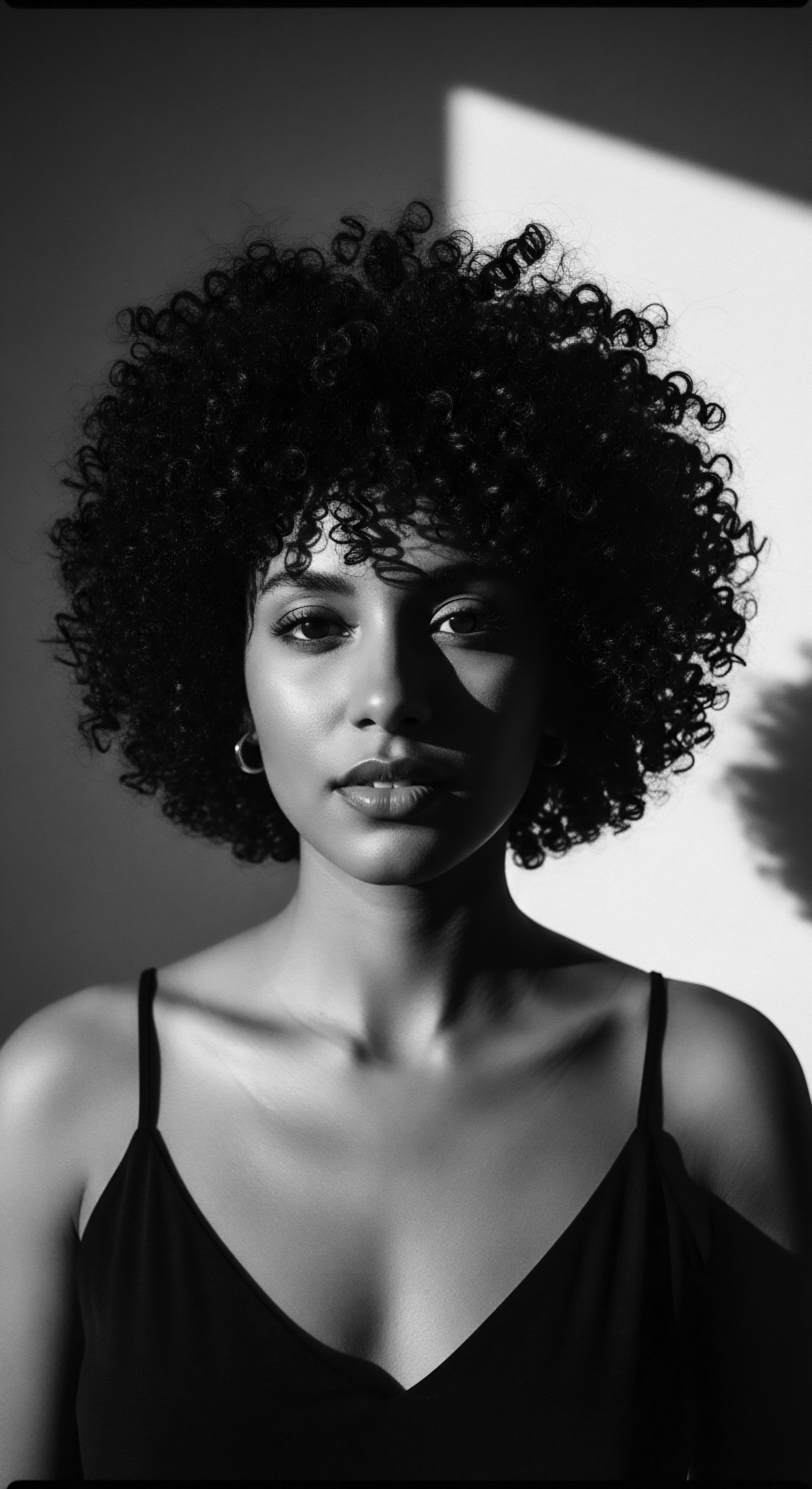
References
- Nwokolo, Ugo. “Hair Care Practices and the Symbolism of Hair among the Igbo People of Nigeria.” Journal of African Cultural Studies 30, no. 1 (2018) ❉ 87-104.
- Dawson, Ashley. Textured Hair ❉ The Complete Guide to Hair Care, Styling, and Health for Wavy, Curly, Coily, and Kinky Hair. Crown Publishing Group, 2021.
- Burgess, Carole. The Hair Bible ❉ A Complete Guide to Healthy Hair and Scalp Care. Cengage Learning, 2017.
- Robbins, Cynthia R. Chemical and Physical Behavior of Human Hair. 6th ed. Springer International Publishing, 2012.
- Bukhari, I. A. “Skin Physiology of the Scalp.” Journal of Clinical and Aesthetic Dermatology 11, no. 11 (2018) ❉ 36-40.
- Guex, Jean-Louis, and Philippe Humbert. The Hair and Scalp in Health and Disease. CRC Press, 2020.
- Morrow, Andrea. Hair Story ❉ Untangling the Roots of Black Hair in America. St. Martin’s Press, 2001.
- Byrd, Ayana D. and Lori L. Tharp. Hair Matters ❉ Beauty, Power, and Black Women’s Consciousness. New York University Press, 2014.
